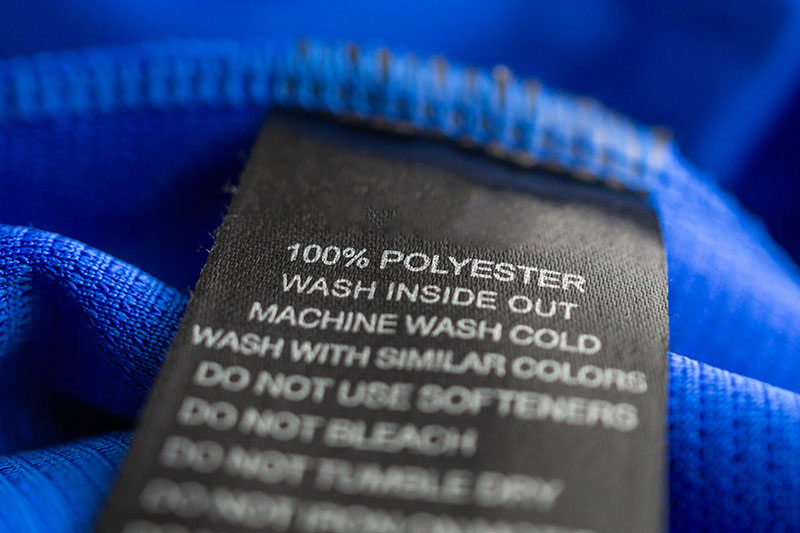Briefing:
Polyester, nylon, spandex — these fabrics are in nearly every closet. But here’s the uncomfortable truth: they’re petroleum-based. In other words, when you put on synthetic clothes, you’re essentially wearing oil on your body all day long.
At a high level, it may feel harmless. The fabric is soft, stretchy, and convenient. But at the cellular level, your body is under constant, low-grade attack from microplastics and chemicals these fabrics release.
From Cotton to Petroleum
Your grandparents wore cotton, wool, hemp, and linen. Natural, breathable fabrics grown on farms.
Today, more than 60% of clothing worldwide is made from synthetics — spun from petroleum just like plastic bottles and car tires. Polyester, nylon, acrylic, spandex… they’re all forms of plastic.
Why? Because it’s cheap to make, it lasts forever, and it’s profitable. But cheap for manufacturers doesn’t mean safe for your health.
How Synthetic Fabrics Attack Your Body
1. Microplastics Everywhere
Every wash, synthetic fabrics shed tiny plastic fibers. These don’t just pollute oceans — they enter our food, our water, and our air. Studies have found microplastics in human blood, lungs, and even placentas.
2. Chemical Soup
To make synthetics wearable, manufacturers add dyes, flame retardants, wrinkle-resistant agents, and stain repellents. Many of these are known endocrine disruptors that interfere with hormones like estrogen and thyroid.
3. Skin Contact
Your skin is your largest organ. Clothes sit against it all day and all night. If your laundry smells like “spring meadow” or “mountain breeze,” what you’re smelling is chemicals leaching out — and your body is absorbing them.
The Health Risks
- Hormone Disruption: Synthetic fabric additives have been linked to fertility issues, thyroid disease, and hormone-sensitive cancers.
- Respiratory Issues: Microfibers shed into the air and inhaled may contribute to lung irritation and inflammation.
- Chronic Inflammation: Plastics and their additives fuel low-grade inflammation, which drives many age-related diseases: heart disease, diabetes, Alzheimer’s, cancer.
For older adults already at higher risk, reducing unnecessary exposure is just common sense.
What You Can Do About It
You can’t live in a bubble — but you can make smarter choices.
1. Choose Natural Fabrics Where It Matters Most
- Closest to your skin: underwear, socks, t-shirts, bedsheets.
- Pick cotton, linen, hemp, or wool — fabrics that breathe and don’t shed plastic.
2. Wash Smarter
- Wash synthetics in cold water to reduce shedding.
- Use a filter bag (like Guppyfriend) or a washing machine filter to trap microfibers.
3. Rethink Laundry Products
- Skip fabric softener — it’s just a chemical coating you wear all day.
- Use vinegar instead — it softens, removes odors, and rinses clean.
- Pick unscented detergents — if you can smell it, your body is absorbing it.
4. Buy Less, Buy Better
- A few natural-fiber basics are healthier and last longer than a closet full of cheap polyester.
Final Takeaway
You wouldn’t rub petroleum jelly all over your body and call it health. But when we wear synthetic fabrics, that’s essentially what’s happening — only hidden in plain sight.
At the cellular level, your body knows the difference. Natural fabrics support your health; petroleum-based synthetics attack it.
Start small: swap your underwear, socks, and sheets for natural fibers. Your skin — and your long-term health — will thank you.
Sources for Further Reading
- Leslie HA, et al. “Discovery and quantification of plastic particle pollution in human blood.” Environ Int. 2022.
- Zhang J, et al. “Microplastics in human lungs.” Science of the Total Environment. 2022.
- Harvard Health: “Endocrine disruptors: Trouble-making chemicals” — health.harvard.edu
- Environmental Working Group (EWG): “The Dirty Laundry Problem” — ewg.org
- Guppyfriend — guppyfriend.com

